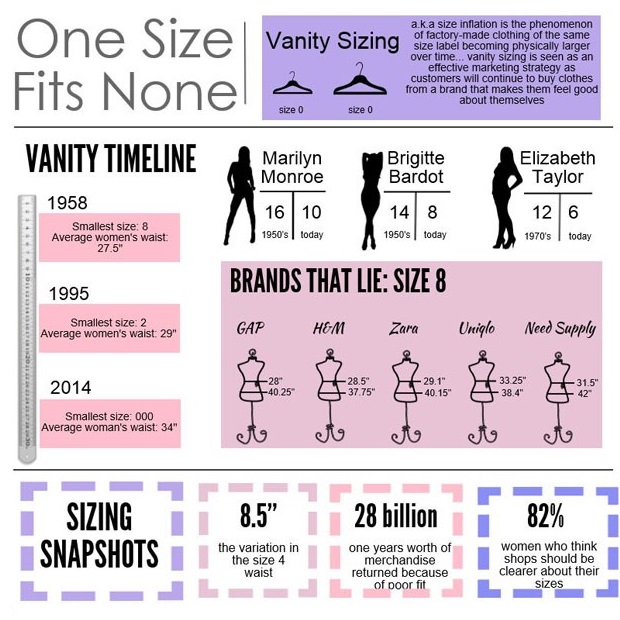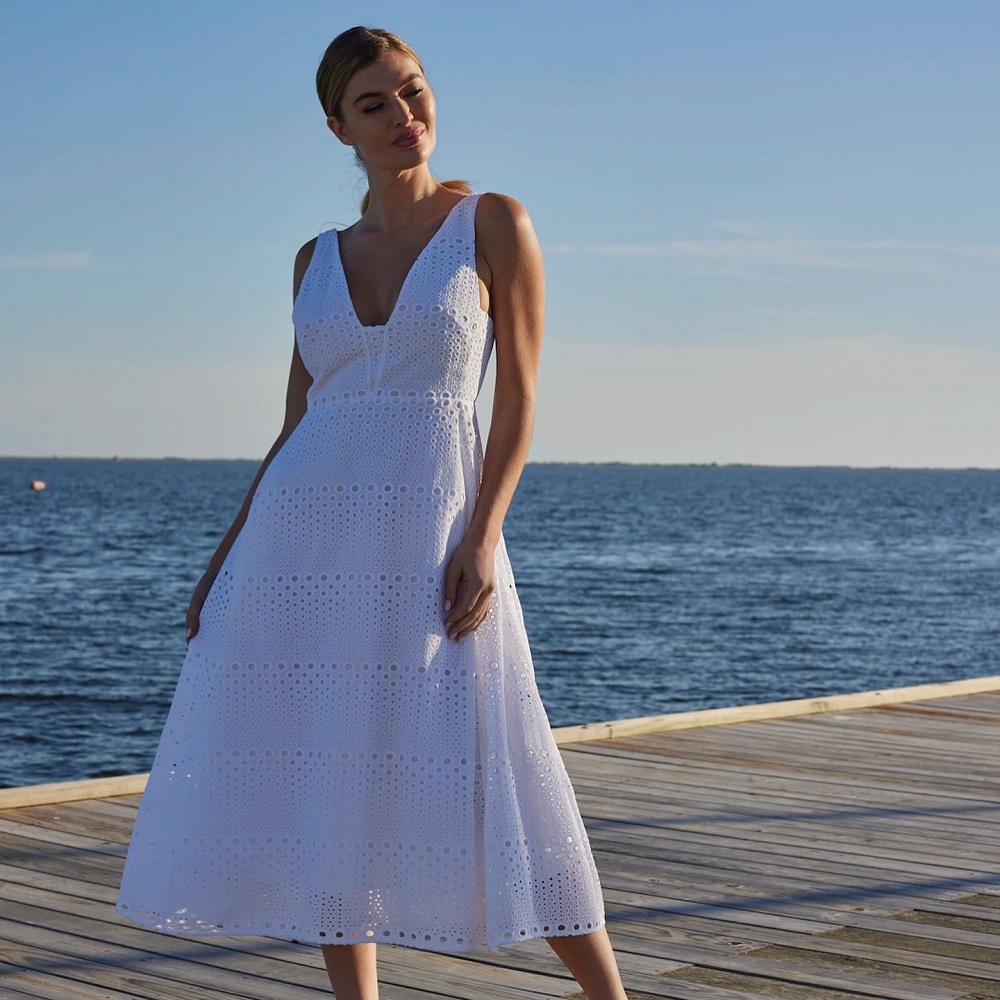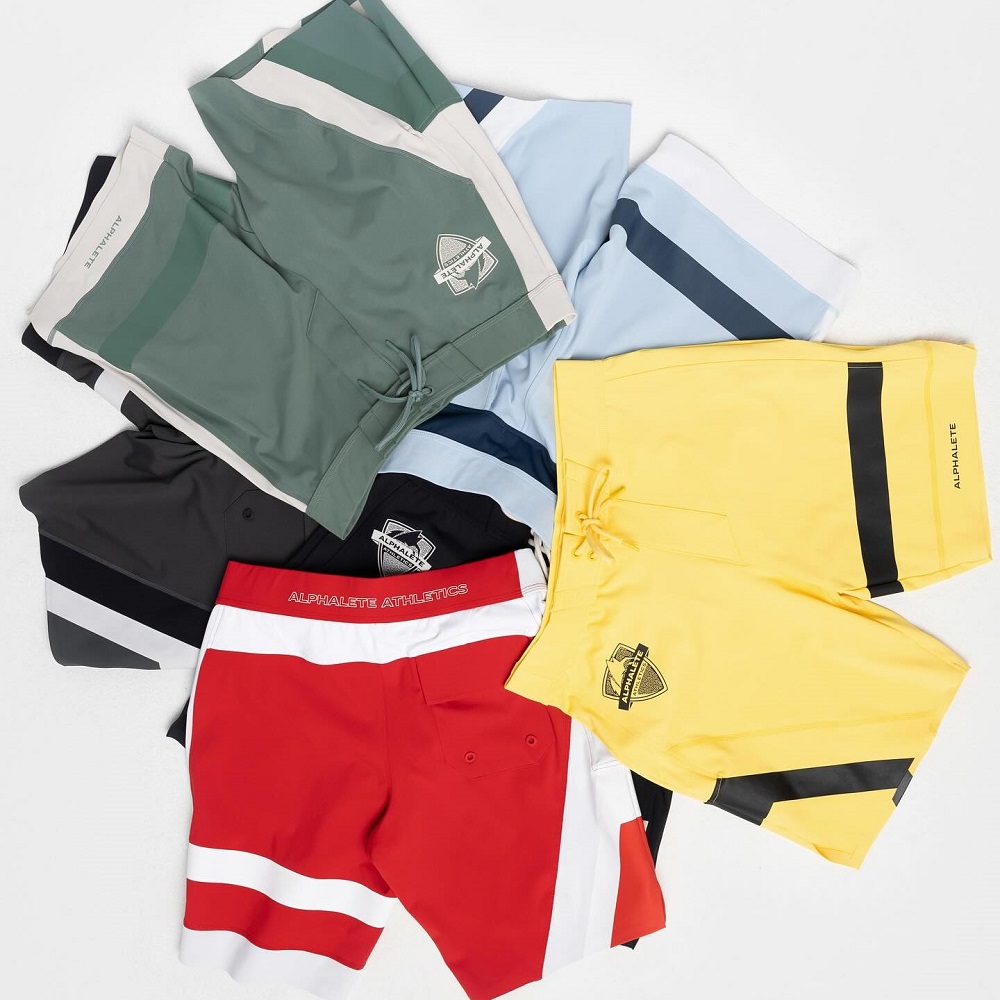Vanity Sizing: The Truth About Inconsistent Clothing Sizes
Table of Contents
As someone who enjoys shopping, I’ve noticed that finding the perfect size can be a challenge. Sometimes, I try on clothes that are my usual size, but they are either too big or too small. I used to think it was just me, but it turns out that many people have experienced this issue. This phenomenon is known as vanity sizing, and it has become increasingly prevalent in recent years.
So, what exactly is vanity sizing? In short, it is the practice of labeling clothing with a smaller size than it actually is. This means that a person who used to wear a size 10 may now fit into a size 8 or even a size 6. While this may sound like a good thing, it can be frustrating for those who are trying to find clothes that fit properly. Vanity sizing can also be misleading, as it can make people believe that they have lost weight when, in reality, the clothes have just been labeled differently.
While vanity sizing is most commonly associated with women’s clothing, it can also be found in men’s clothing. In fact, some brands have even started using the term “vanity sizing” to describe their practice of labeling clothes with smaller sizes. This has led to confusion and frustration for many shoppers, who may not understand why they can no longer fit into their usual size. In this article, we will explore the history of vanity sizing, its impact on the fashion industry, and what shoppers can do to navigate this trend.
What is Vanity Sizing?
When shopping for clothes, you may have noticed that the size you usually wear doesn’t always fit the same way across different brands. This is where vanity sizing comes into play. Vanity sizing refers to the practice of labeling clothing with sizes that are smaller than the item’s actual measurements.
In other words, a size 6 dress may actually fit someone who typically wears a size 8 or 10. This practice is meant to make customers feel better about themselves by making them believe they fit into a smaller size than they actually do. Vanity sizing is not a new concept and has been around since the 1930s.
However, it has become more prevalent in recent years, particularly in the United States and the United Kingdom. It has also been documented that the practice is more common among lower-end clothing brands. The sizing of clothing is not regulated by any government agency, which means that each brand can set its own standards.
This lack of standardization has led to confusion among consumers and has made it difficult for them to find clothes that fit properly. Additionally, it has been suggested that vanity sizing can lead to body image issues, as it creates an unrealistic expectation of what size a person should be.
History of Vanity Sizing
I find it fascinating to learn about the history of vanity sizing. It all started in the early 1940s when the Works Projects Administration commissioned a study of the female body in the hopes of creating a standard labeling system.
Until then, sizes had been based on bust, waist, and hip measurements, but the study found that women’s bodies had changed since the last study in the 1920s. Fast forward to the 1980s, and the flawed North American women’s measurement guide was abandoned altogether in favor of a trend now known as vanity sizing.
Most popular in the US and UK markets, vanity sizing is a practice where clothing companies assign smaller sizes to garments than their actual measurements.
This trend has radically changed the meaning of clothing sizes over time. For example, a size 8 in the 1950s would be a size 00 today. Despite the US Government’s attempts to establish universal sizing standards in the early and mid-1900s, their efforts ultimately failed. By 1983, fashion brands had decided it was time to bring sizing and fit strategies entirely in-house.
This led to the widespread adoption of vanity sizing, which has been a controversial topic ever since. One of the biggest criticisms of vanity sizing is that it has contributed to the normalization of obesity in society.
The UK’s Chief Medical Officer has suggested this, and studies have shown that shoppers prefer to buy clothing labeled with small sizes because it makes them feel better about themselves.
However, the reality is that vanity sizing is just a marketing tactic used by clothing companies to make customers feel good about themselves and their purchases.
Why Do Brands Use Vanity Sizing?

Vanity sizing is a common practice among clothing brands, and it has been around for decades. As a consumer, you might have noticed that you can fit into a smaller size at one store compared to another, even though your body measurements have not changed. This can be confusing and frustrating, but it is all part of the marketing strategy of the brand.
So why do brands use vanity sizing? It’s simple – to make you feel good about yourself and to sell more clothes. By labeling a larger size with a smaller number, brands can flatter their customers and make them feel better about their bodies. This can lead to increased customer loyalty and repeat business.
Another reason why brands use vanity sizing is to differentiate themselves from their competitors. If a brand offers a size 4 that fits like a size 6, customers are more likely to choose that brand over another that offers a size 4 that fits like a true size 4. It’s all about standing out in a crowded market and attracting customers.
Finally, brands use vanity sizing to increase their profits. If a customer feels good about themselves when they try on clothes, they are more likely to make a purchase. By flattery their customers with smaller sizes, brands can increase their sales and revenue.
Overall, the use of vanity sizing is a marketing strategy that has proven to be effective for many clothing brands. As a consumer, it’s important to be aware of this practice and to not let it affect your self-esteem or body image. Remember that the number on the tag does not define your worth or beauty.
The Negative Effects of Vanity Sizing
Body Image Issues
Vanity sizing can have a significant impact on body image issues. When clothing sizes are not consistent across brands, it can be difficult for consumers to know what size to purchase. This can lead to frustration, disappointment, and even shame when a person cannot fit into the size they expect. Additionally, vanity sizing can contribute to unrealistic body standards and encourage people to strive for unattainable sizes.
Consumer Confusion
Vanity sizing can also cause confusion for consumers. When clothing sizes are not consistent, it can be difficult to compare prices between brands. Additionally, vanity sizing can make it challenging to shop online, as consumers may not know what size to order. This can lead to increased returns and decreased customer satisfaction.
Inconsistent Sizing
Vanity sizing can also result in inconsistent sizing across brands. This can be frustrating for consumers who have found a brand that fits them well, only to find that the same size in a different brand does not fit the same way. Inconsistent sizing can also make it difficult for retailers to manage inventory and can lead to increased costs associated with returns and exchanges.
How to Shop Despite Vanity Sizing
Know Your Measurements
When shopping for clothes, it’s important to know your measurements. Take your bust, waist, and hip measurements and keep them handy. This will help you determine which size to order, even if the sizing chart is off due to vanity sizing. Don’t rely solely on the size label, as it may not be accurate. Instead, look for size charts on the retailer’s website and compare your measurements to the chart.
Read Reviews
Reading reviews from other shoppers can be helpful when shopping despite vanity sizing. Look for reviews from shoppers who are similar in size and body shape to you. They may provide insight into whether the item runs true to size or if it runs large or small. If the reviews consistently mention that the item runs small, consider sizing up. If the reviews consistently mention that the item runs large, consider sizing down.
Try Before You Buy
If possible, try on clothes before you buy them. This can help you determine if the item runs true to size or if it’s been vanity sized. If you’re shopping online, consider ordering multiple sizes and returning the ones that don’t fit.
Many retailers offer free returns, so take advantage of this if you need to. In summary, knowing your measurements, reading reviews, and trying on clothes before you buy can help you shop despite vanity sizing. Don’t rely solely on the size label, as it may not be accurate. Instead, use these tips to find clothes that fit well and make you feel confident.
Conclusion
After researching and analyzing the topic of vanity sizing, I have come to the conclusion that it is a complex issue that affects both consumers and retailers. While vanity sizing may make shoppers feel better about themselves, it can also lead to confusion and frustration when trying to find the right fit.
It is important for consumers to be aware of vanity sizing and to not solely rely on the size label when shopping. Trying on clothes and paying attention to the fit is crucial in finding the best size for each individual.
Retailers should also take responsibility and strive for consistency in sizing across all brands and price points. While it may be tempting to use vanity sizing as a marketing tool, it ultimately leads to a lack of trust from consumers.
Overall, the issue of vanity sizing is not easily solved. However, by being informed and aware, both consumers and retailers can work towards finding a solution that benefits everyone.








